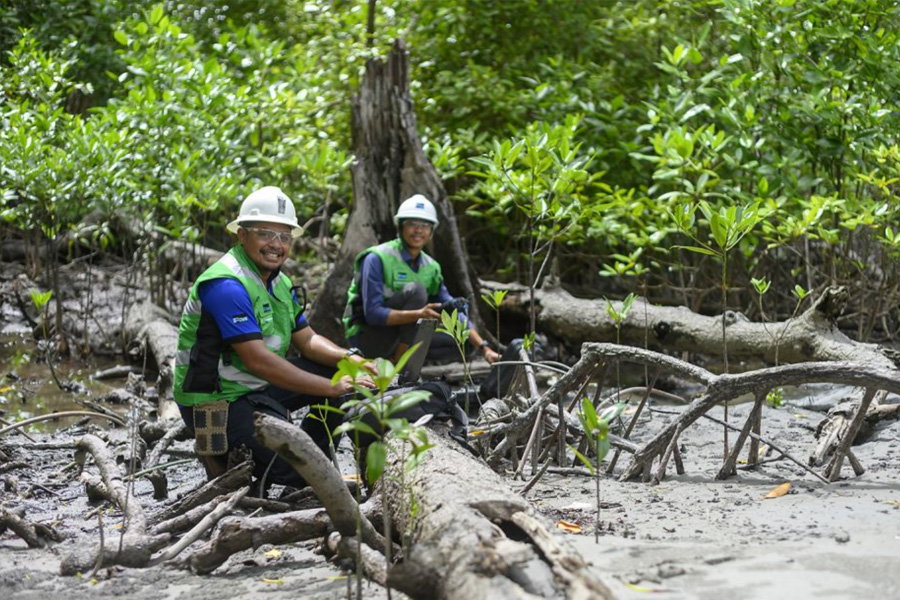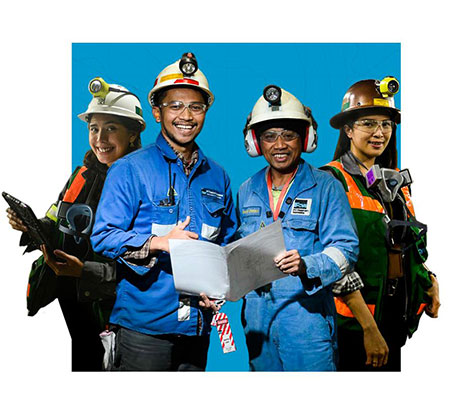25 November 2021

All of us are surely familiar with the name PT Freeport Indonesia. It is renown as one of the biggest gold mining companies in Indonesia. PTFI—the abbreviation it is known by – was established more than 50 years ago. Over that span of time PTFI would certainly have contributed much to state revenue through production of millions of tons of minerals containing gold, silver, and copper. PTFI also stands by the principles of sustainable environment and mining for life. Unrefutably, its mining operations have given rise to frequent debates on their impacts to the environment. But from the outset PTFI has remained committed to maintaining environmental conservation in Papua through application of the concept of sustainable mining. As stated during the Indonesia Writers Festival 2021, PTFI employs environmentally friendly mining practices, and this certainly impacts the people of Papua positively from the social as well as economic aspects. As such, PTFI is highly focused on managing mining waste. There are several interesting facts about PTFI’s waste management.
1. Waste management employs the principle of waste hierarchy
As is common in industries that manage their waste, PTFI applies the 3Rs of reduce, reuse, and recycle. But PTFI goes further and applies the principle of reduce, reprocess and downcycle to the waste it produces, rendering it more beneficial and sustainable. In the initial phase, PTFI reduces its waste. The waste is then reused and recycled into new, useful products. Another phase involves energy recovery, in which waste is processed into a new energy source. When waste can no longer be processed or reused, it is stockpiled in accordance with Government of Indonesia regulation. PTFI has three separate locations for stockpiling non-hazardous location – the landfills TPA Koteka, TPA MP74 in the highlands, and TPA MP38 in the lowlands. Meanwhile hazardous waste is transported to licensed domestic processing industries.
2. Waste is processed into new energy sources and various environmentally friendly products
Numerous products are produced from PTFI’s mine waste. In addition to objects and oil, PTFI initiated the processing of ash from its boilers to generate electricity. In this manner the volumes of ash produced from mining activity are reduced. This initiative earned the company recognition from the Energy and Mineral Resources (ESDM) Ministry. Waste is also processed into environmentally friendly and useful items for surrounding communities. For instance, containers, oil residue, paper, and other used objects are reused to meet the local community’s needs.
3. Utilization of tailings as media for reclamation and infrastructure construction
Tailings are the waste produced from the processing of mineral ore into gold and copper, and take the form of finely ground rock or particles. Tailings still contain some valuable minerals and are therefore highly hazardous to the environment. As such, this waste must be effectively managed to preclude adverse impacts to the environment. PTFI is highly aware of this matter. According to recent data, PTFI has utilized 1.1 million tons of tailings for construction of infrastructure in Papua. Tailings among others were also utilized as media for reclamation in Ajkwa River, for construction of the Trans-Nabire Highway, and for construction of the parking structure of the Eme Neme Yauware building in Timika. In the processing, tailings are mixed with additives to produce tailings concrete known as beton sirsat. The advantage of this concrete is its resistance to freshwater, seawater, and acid rain, and it costs half as much as conventional concrete, as well as containing lower concentrations of leachates, thus making it safer to use
4. Utilization of tailings for cultivation of food crops
In addition to providing an admixture for concrete, tailings are utilized for food crops cultivation. In collaboration with Papua University’s Faculty of Agriculture (Faperta UNIPA), PTFI conducted research to utilize tailings in farming. Apparently, tailings land can be planted with food crops that are of high quality and are safe for consumption. In September of 2020, more than 140 varieties of plants were grown on 1,000 hectares of tailings land in Mimika. Uniquely, several fruits that were produced, such as pineapples, mango, and dragon fruit were sweeter than usual. This is certainly an interesting development. Residents of Mimika now have access to alternate productive land to meet their food needs.
5. PTFI achievements maintain a sustainable environment for Papua
In 2020 lalu, PTFI attained achievements to protect Papua’s environment and reduce its environmental impacts. Three of such achievements are as follows. 1,000 hectares of tailings land in the Ajkwa Estuary area have been reclaimed. The reclamation area has transformed into a biodiverse ecosystem for more than 500 plant species, 116 bird species, 64 butterfly species, 22 reptile species, and 11 mammalian species that thrive under a natural succession process. In addition to providing an admixture for concrete, tailings extract is utilized as a component in the fertilizer formula for growing edible caladiums that are a staple food for Papuans. Also, some 4,000 tons of tailings were shipped to Merauke Regency in Papua for material in the construction of infrastructure. Certainly, as a major mining company, it is PTFI’s responsibility to conduct an environmentally-friendly mining operation. In addition to conducting industrial activity, PTFI is making contributions for the people of Papua through utilization of its mining waste.
Kami menghimbau para pencari kerja untuk berhati-hati dan mewaspadai beragam modus penipuan perekrutan yang mengatasnamakan PT Freeport Indonesia. Dalam setiap proses rekrutmen dan penerimaan karyawan, PT Freeport Indonesia maupun konsultan rekruitmennya tidak memungut biaya apapun.
Untuk melihat lowongan, silakan akses melalui link berikut: ptfi e-recruitment
Untuk melihat informasi magang, silakan akses melalui link berikut: Internship Program
